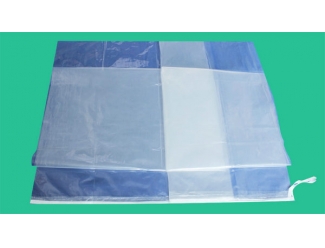Sterile protective sheath during debridement surgery
During debridement surgery, a large amount of flushing solution and disinfectant are needed to flush the wound, and the flushing solution, disinfectant, and blood can contaminate the debridement vehicle during the flushing process.
So after the cleaning is completed, it is necessary to clean and disinfect the contaminated cleaning vehicle. Especially for patients with syphilis, hepatitis B, and other conditions, if the debridement vehicle is not properly cleaned and disinfected after wound treatment, cross infection and secondary contamination of other items may occur.
The debridement vehicle is widely used in debridement surgery due to its advantages such as easy operation, flexibility, and the ability to perform flushing and disinfection simultaneously.
In order to protect the safety of patients and surgical personnel, the sterile medical protective cover in the operating room is placed on the debridement vehicle, and the protective cover is folded over to cover the external surface of the debridement vehicle (during surgery, the external surface of the debridement vehicle is protected from contamination).
Then, pull out the bottom of the protective sleeve from the outlet of the debridement vehicle, cut off the bottom of the protective sleeve, and connect it to a medical waste bin (to avoid flushing fluid and blood splashing). When performing debridement and flushing on the patient’s limb wounds, satisfactory results were achieved.
The protective cover is made of plastic material, transparent, lightweight, and easy to operate; It can effectively isolate pollutants such as blood and disinfectant, avoiding secondary pollution and potential cross infection caused by the use of debridement vehicles; The protective cover is disposable, making it convenient for cleaning and disinfecting the debridement vehicle after surgery, saving time and effort, reducing the workload of nurses, and improving work efficiency.






